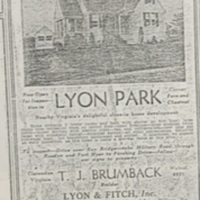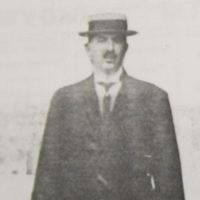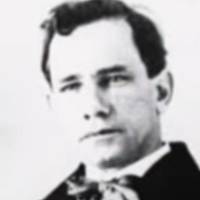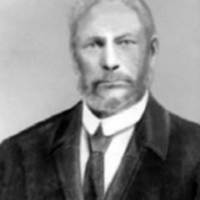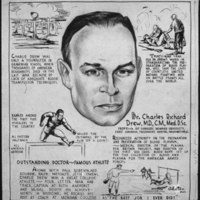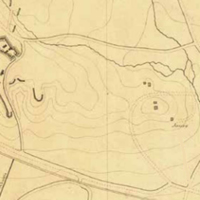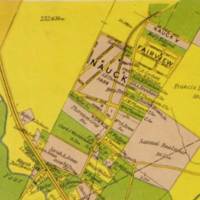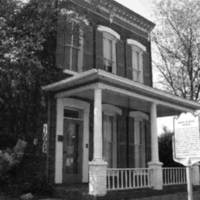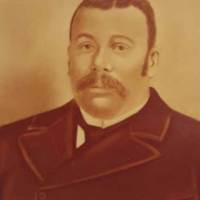Browse Items (79 items total)
Lyon Park was founded by politician, lawyer, and developer Frank Lyon in 1919. The 300 acre community was the largest real estate development in Virginia upon its opening. Lyon Park featured modest homes and highlighted the area's connections to Washington via the county's growing network of streetcar lines. The community continued to grow throughout the twentieth century, as the above home advertisement from the 1940s highlights.
Collection: Neighborhoods
Crandal Mackey was a prominent county politician and developer. Mackey was born in Louisiana in 1865. He was drawn to Arlington in 1885 while working for the War Department and attending Georgetown Law School. In 1890 Mackey helped to establish the Good Citizen's League, a powerful local social and political group that sought to shape the county's suburban development and promote Democratic political candidates. In 1902 Mackey was elected Commonwealth's Attorney with their support. The following year he established the Maywood neighborhood in Arlington.
Collection: Neighborhoods
Frank Lyon was a prominent Arlington politician and developer. During the late 1910s and early 1920s Frank Lyon and his Lyon & Fitch Realty Company subdivided and sold 465 acres in Arlington – nearly three percent of all the land in the county. These acres were divided between his two communities: Lyon Park and Lyon Village. The Lyon properties helped to transform Arlington’s built environment through their focus on pre-planned suburban subdivisions. Lyon also shaped county affairs as a member of the Good Citizen's League social and political organization, and as owner of "The Monitor" newspaper.
Collection: Neighborhoods
William A. Rowe escaped enslavement and fled to Freedman's Village in Arlington, where he became a prominent community leader. Rowe was trained as a blacksmith in the Village and became a particularly successful African American politician. He served as Supervisor of Jefferson District from 1871 to 1879 and even served as Board chairman from 1872 to 1883. After the closure of Freedman's Village, Rowe relocated to Green Valley in 1879 with his wife and three children. Rowe quickly re-established his role as a local political leader in his new community, serving as the area's Supervisor.
Collection: Neighborhoods
Charles Drew was an African American surgeon and scientist whose pioneering work with blood plasma and transfusions saved countless lives during World War II. He ultimately left military service after the US Government attempted to segregate blood donations without any scientific need for such a policy. Drew served as a Professor at Howard University, the chief surgeon at Freedmen's Hospital, and became the first African American examiner for the American Board of Surgery. He died in a car accident in 1950 at the age of 45, leaving behind his wife Minnie and four children.
Collection: Civil Rights
In 1844 Sarah and Levi Jones purchased 14 acres of land in eastern Arlington along Four Mile Run to farm and build a home. Their property, labeled "Jones," can be seen at the center of the map above. Throughout the decades before and after the Civil War, the Jones family expanded their farm, sold land to fellow African Americans to help create the Green Valley neighborhood, and became community leaders.
Little is known about Sarah's life before 1844, but Levi was born free in Fairfax, Virginia. His parents, Davy and Evy, were enslaved on George Washington's Mount Vernon plantation.
Little is known about Sarah's life before 1844, but Levi was born free in Fairfax, Virginia. His parents, Davy and Evy, were enslaved on George Washington's Mount Vernon plantation.
Collection: Neighborhoods
In the 1880s John Nauck platted the Nauck subdivision within the African American Green Valley community. Nauck was a white land developer from Washington, D.C. who sold lots to African Americans. Community institutions, including the Nauck's Citizens' Association, were named after Nauck and his subdivision. In the 1970s the name of the Green Valley community became known as Nauck.
Collection: Neighborhoods
Harry W. Gray was born into slavery at Arlington House plantation to parents Thornton and Selina Gray. Following the war Gray worked as a bricklayer before transitioning into work for the federal government, where he served first as a fireman and later an Assistant Messenger for the Department of the Interior.
With his skills in masonry, Gray built a large Italianate-style row home in the Johnson's Hill community in 1881. This home mimicked the style of houses then seen in Washington's African American Foggy Bottom neighborhood. Gray and his wife Martha raised four children in their home in Johnson's Hill. The Gray House is on the National Register of Historic Places.
With his skills in masonry, Gray built a large Italianate-style row home in the Johnson's Hill community in 1881. This home mimicked the style of houses then seen in Washington's African American Foggy Bottom neighborhood. Gray and his wife Martha raised four children in their home in Johnson's Hill. The Gray House is on the National Register of Historic Places.
Collection: Neighborhoods
The Gray House is an Italianate-style row home built by African American Harry W. Gray in the Johnson's Hill community of Arlington in 1882. The two-story, three-bay wide, red brick home mimicked the style of houses in Washington, D.C.'s Foggy Bottom neighborhood. With the use of this style, similar to those homes created by middle class African Americans in the nearby city, Gray illuminates his visions for what makes an area a good place to live and his aspirations for himself and his family in freedom.
Gray was born into slavery. During his time in enslavement he became a skilled mason and brick worker. He used these skills to build his home. After the Civil War Gray transitioned into work as a public servant with the Department of the Interior. Gray lived in the home in Johnson's Hill with his wife Martha, their four children, and two live-in servants.
The home was put on the National Register of Historic Places in 2003.
Gray was born into slavery. During his time in enslavement he became a skilled mason and brick worker. He used these skills to build his home. After the Civil War Gray transitioned into work as a public servant with the Department of the Interior. Gray lived in the home in Johnson's Hill with his wife Martha, their four children, and two live-in servants.
The home was put on the National Register of Historic Places in 2003.
Collection: Neighborhoods
Henry Louis Holmes was an early leader in Arlington's African American community. Enslaved before the Civil War, Holmes was drawn to Arlington by Freedman's Village. While little is known about his early life, after the war Holmes served as a leader in the Radical Republican political party, was active in the black community through the Mason and Odd Fellow fraternal organizations, and served as a trustee for St. John's Baptist Church. In 1882 he helped to found the Butler-Holmes community, where he lived with his wife Emma and their children.
Collection: Neighborhoods
